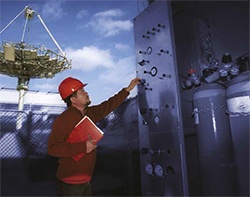
 by North Sullivan Photography
by North Sullivan PhotographyManaging the risks from future human-induced climate change will necessarily be based on some combination of four broad strategies:
Each embodies a large suite of specific options, with associated risks, costs and benefits. The four strategies can affect each other: for example, doing nothing to reduce emissions would require increased expenditure to adapt to climate change, and increased chances of future resort to geoengineering.
CO2 is the dominant contributor to human-induced climate change (Question 3). If the world adopts a target of keeping warming to less than 2°C above preindustrial temperatures, then future cumulative CO2 emissions would need to be capped at around 30 years worth of current emissions (Question 4). Estimates of the amount of carbon in accessible fossil fuel reserves vary, but all agree that these reserves are at least several times larger than the carbon cap for a 2°C warming limit. Therefore, such a carbon cap, or even a significantly more lenient one, can only be met if a large fraction of available fossil fuel reserves remains unburned or if the CO2 released is captured and permanently sequestered (see below).
Methane, nitrous oxide, halocarbon gases and black-carbon aerosols also have warming effects (Question 3), and reductions in their emissions would reduce the near-term warming rate. However, their combined contributions to warming over the longer term would be much less than that of CO2, so these reductions alone could not meet a goal such as a 2°C warming limit.
There are many ways to reduce emissions of CO2 and other warming agents, including shifting energy supply away from dependence on fossil fuels; energy efficiency in the domestic, industrial, service and transport sectors; reductions in overall demand through better system design; and efficient reductions in emissions of methane, nitrous oxide, halocarbon gases and black-carbon aerosols. Uptake of all of these options is happening now, and multiple studies have shown that they can be expanded effectively.

 by Claudio Goodman
by Claudio GoodmanIn principle there are two interventions that could relax constraints on future emissions, but with significant uncertainties, risks, costs, and/or limitations. One would be to remove CO2 from combustion exhaust streams or from the air, and sequester it underground, in the deep ocean, or in trees or the soil. The places used to store this carbon need to hold it for many centuries. Such carbon sequestration strategies face logistical, economic and technical challenges.
The other possible intervention would be to reduce Earth’s net absorption of sunlight, for example by generating a stratospheric aerosol layer or placing shields in space. While this could offset the surface warming caused by increasing greenhouse gases, it would do nothing to stop ocean acidification, would need to be maintained in perpetuity, and would carry multiple risks of adverse additional consequences on a global scale. Our current understanding of the climate system does not enable us to fully understand the implications of such actions.
Under any realistic future emissions scenario (Question 4), some additional global warming is inevitable and will require adaptation measures. Indeed, adaptation is needed now in response to climate change that has occurred already. The more CO2 that is emitted in the next few decades, the stronger the adaptation measures that will be needed in future. There are limits to the adaptive capacities of both ecosystems and human societies, particularly in less developed regions. Thus, the decisions we make today on emissions will affect not only the future requirements for and costs of adaptation measures, but also their feasibility.
As our society makes choices about managing the risks and opportunities associated with climate change, there is an important role for objective scientific information on the consequences of alternative pathways. Choices also hinge on ethical frameworks and value judgements about the wellbeing of people, economies and the environment. The role of climate science is to inform decisions by providing the best possible knowledge of climate outcomes and the consequences of alternative courses of action.
© 2025 Australian Academy of Science